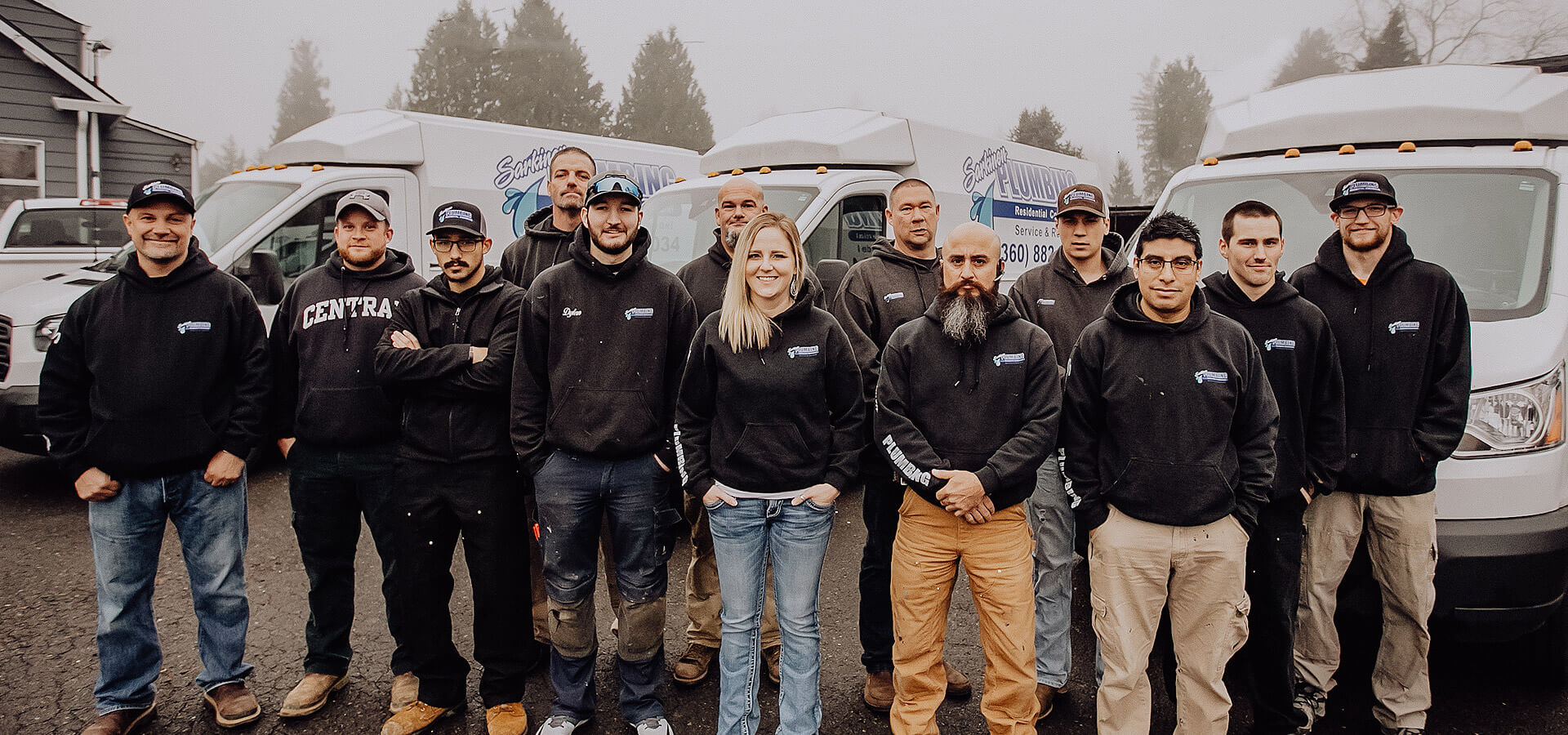- Vancouver 360-369-3586
- Portland 503-925-3504
- Fast No Obligation Estimate
- Home
- About
- Plumbing Services
- Emergency Plumbing
- Drain Cleaning
- Leak Detection & Repair
- Sewer Line Repair
- Repiping
- Trenchless Pipe Repair & Replacement
- Water Heater Repair
- Water Heater Installation
- Main Water Line Repair
- Main Water Line Replacement
- Garbage Disposal Repair & Installation
- Faucet & Fixture Installation
- Toilet Installation
- Trenchless Boring Services
- New Construction
- Commercial Plumbing
- Water Filtration and Softening
- Water Damage Restoration
- Electrical
- Heating & Cooling
- Restoration
- Service Area
- Reviews
- Coupons
- Contact Us
- Membership

What’s the difference between a pipefitter and a plumber?
by Sarkinen Plumbing | Dec 19, 2018
Pipefitters and Plumbers: What You Should Know
A majority of people can’t differentiate between a pipefitter and a plumber. It’s true, the two professions both work with piping systems, both need experience in welding, and both connect pipes for the purpose of water flow. For the sake of categorization, the two terms are frequently lumped together, but they absolutely do not mean the same thing.
While pipe fitters and plumbers have a lot in common and require knowledge related to cutting, measuring and fixing pipes, they have their differences. It’s important to know the differences between the two. Why? Because the wrong professional needed to assist with your pipe problems or needs depends on it. Here is a rundown of the differences between a pipefitter and a plumber.
Differences in Tools
Plumbers use tools like:
- Basin Wrench
- Toilet Auger
- Pipe Wrench
- Tube Cutter
- Flashlight
Pipe Fitters use tools like:
- Fitter Grip
- Cutting Torch
- Welder
- Saw
- Pressure Gauge
Differences Based on What They Do
Both pipefitters and plumbers are involved in installing, repairing, assembling, and maintaining piping structures but their job descriptions vary due to a number of different systems they work on.
Plumbers:
- Install, fabricate, repair, assemble, and maintain systems such as water filtration, hot-water heaters, and sewage lines
- Unclogs drains and pipes
- Fit new appliances like water heaters and refrigerators
- Replace or fix water fixtures
- Fix or install laundry machines as well as dishwashers
- They also analyze and solve problems caused by the plumbing systems
- Most of them work with both local and state-building codes
Pipefitters
- They install, fabricate, repair, assemble, and maintain systems that transport gases, chemicals, and acids
- Work on delivery and fuel systems
- Help service commercial cooling and heating systems
- Repair and maintain commercial waste disposal and water systems
- Cut, weld, and reshape pipe components and sections
- Fix or install piping to meters, hydraulic and pneumatic controls, fitted compressors, and pumps
- Work on specialized pipe materials like copper, PVC, Inconel, stainless steel, and galvanized steel
- Make sure safety requirements are achieved
Other types of ‘fitters
Sometimes, a pipefitter refers to a broad term that carries other specialties and professions based on a particular type of pipe used. They include the following:
- Steamfitters – fix or install piping systems for high-pressure moving water, steam, and other fluids
- Gasfitters – work with piping structures that transport gaseous substances such as oxygen
- Sprinkler-fitters – repair or install sprinkler structures or systems both for commercial and private enterprises
Differences Based on the type of Materials they Work on
Generally, pipefitters work on systems that carry high-pressure substances. Such systems are made of metal and their alloys like stainless-steel, high-carbon steel, copper-nickel, duplex stainless, chrome-moly, and etcetera in order to withstand maximum pressure. They also join different parts by tack-welding – meaning pipefitters are also good welders who can fabricate parts such as tees, elbows, tack-weld pipes, and flanges together.
Additionally, live stream, a very hazardous substance is used together with the metal alloys. Therefore, it requires that pipefitters have a high degree of knowledge and skills to handle such materials and to connect the high-pressure piping systems of the metal alloys.
Plumbers deal with low-pressure systems such as tap water and sewage applications. They, therefore, operate with simple materials such as galvanized pipe, copper, and PVC. Their duty is to connect pipes with glue, solder, and threads. Also, they fit faucets, toilets, sinks, or taps.
Differences Based on where They Work
In most cases, plumbers work in both commercial and residential places like business institutions and homes. Pipe-fitters mainly work in industries like shipyards or factories to fix intense piping systems.
Plumbers
Call a plumber for:
- Newly constructed homes for installation of Urinals (standard and waterless), toilets, and backflow preventers
- Self-employed
- Home building / Private companies
- Construction industrial sites / Construction companies
Pipefitters- Petroleum industries
- Merchant / Navy marines
- Manufacturing industries
- Commercial business institutions
- Petrochemical plants
- Nuclear / Conventional power stations
Differences Based on Skills They Need
A successful pipefitter or plumber needs both troubleshooting and mechanical knowledge and skills in their work. In addition, they require a complete physical strength to get their job well done. But since these careers have different specialties, special skills are needed for each profession since they operate on different kinds of piping systems.
Skills Required by a Plumber:
- Dexterity skills for proper handling of hands when working on cramped and delicate spaces and parts
- Communication skills necessary for bidding job projects, supervising other workers and planning work-schedules
- Customary service for working on business premises and setting up a long-term partnership with customers
Skills Required by a Pipefitter:
- Welding skills (Fillet and Butt welds) for both working with big and small pipes
- Pipe bending and fabrication for threading, bending, and grinding pipes. This is used particularly when replacing or fixing parts of the piping systems. The skill is also necessary
for working on your job projects - Installation and Shoring skills for fitting pipe above and below the ground. When working with huge pipes, trench and hydraulic shoring skills will be necessary.
The skills needed by a pipefitter are much wider and more challenging compared to those of a plumber. This is because plumbers are only required to work with simple tools and materials like copper and PVC. Also, their work is to draw, read master plans, and connect pipes with solder and glue. Additionally, they operate on simple tasks such as fixing sinks, faucets, taps, and toilets. On the other hand, the skills needed by a pipefitter are far much more than just connecting different kinds of pipes. In fact, they are trained to work with special kind of alloys and metals that deliver high-pressure fluids. In addition, they are trained to handle dangerous metal alloys such as high-carbon and stainless steel and live steam.
Differences Based on Salary they Make
Pipefitters usually earn an average amount on $54K per year according to the Bureau of Labor Statistics. This is much higher compared to electricians and plumbers. In places such as California and New York, they earn up to $80K per year. Those who work more than eighty hours a week can earn up to $100K or $140K. Experienced plumbers make about $50K per year and those starting out are able to make about $30K dollars.
In conclusion, both careers require a great deal of training, and going to college is the best way to become a professional pipefitter or plumber. Recent research shows that job opportunities for plumbers, steamfitters and pipefitters will grow to sixteen percent in the next six years. This shows how important these careers are in the current market industry. This guide covers all you need to know about the differences between a pipefitter and a plumber and how each profession is applied at work.
Recent Posts
- Vancouver 360-369-3586
- Portland 503-925-3504
- 9502 NE 72nd Ave Vancouver, WA 98665
It’s as easy as 1, 2, 3!
- Complete the form below so we can schedule your service appointment.
- You will receive an email confirming your appointment details.
- We will text you 30 minutes prior to the technician’s arrival.
Recognition & Awards
customer reviews
![]()
“Highly satisfied with all the work done! Pleasant, friendly worker’s—all work completed lightning-quick and stayed on site until all issues were fully taken care of! Hardly knew anyone was here after work was finished! Can’t go wrong with these people!! Will use again when needed!”
Leonard K.
Vancouver Location
Proudly Serving
Portland and Vancouver
from Wilsonville to Longivew &
Hillsboro to Gresham
UBI # 602-521-027
OR Contractor Lic# 170052 (CCB)
WA Contractor Lic# SARKIPI946MF
OR Plumber Lic# PB115
Customer Satisfaction
4.6 stars - Based on 227 Reviews
![]()
Vote Here For Sarkinen Plumbing in the 2020 Best Of Clark County!
Plumbing Services
- Emergency Plumbing
- Drain Cleaning
- Leak Detection & Repair
- Sewer Line Repair
- Repiping
- Trenchless Pipe Repair
- Water Heater Repair
- Water Heater Installation
- Main Water Line Repair
- Main Water Line Replacement
- Garbage Disposal Repair & Installation
- Faucet & Fixture Installation
- Toilet Installation
- Trenchless Boring
- New Construction Plumbing
- Commercial Plumbing
- Water Damage Restoration
SW Washington Service Areas
Oregon Service Areas
Contact Information
Sarkinen PlumbingVancouver
9502 NE 72nd Ave
Vancouver, WA 98665
Phone: 360-369-3586
Portland
Phone: 503-925-3504
Hours of Operation
Monday - Sunday 24-hours







